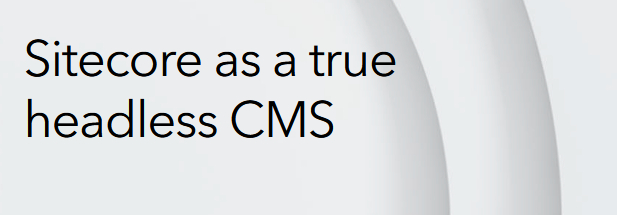Sitecore CMS stands as a powerful content management system that enables organizations to create, manage, and deliver exceptional digital experiences. When dealing with large-scale content, it becomes crucial to implement best practices that ensure efficient content management, scalability, and performance.
In this article, we will explore key best practices for managing large-scale content in Sitecore CMS, including content modeling, taxonomy and metadata, content chunking, content versioning and workflow, content search and indexing, content personalization, performance optimization, scalability and infrastructure, insights and analytics, continuous support, and maintenance, as well as automation and integration.

Content Modeling
Content modeling forms the foundation of effective content management. By carefully defining content types, fields, and relationships, organizations can ensure consistency and structure throughout their content ecosystem. Best practices for content modeling in Sitecore CMS include:
- Analyzing content requirements and defining content types.
- Creating reusable components and templates.
- Establishing clear content hierarchies and relationships.
Taxonomy and Metadata
Implementing a well-defined taxonomy and metadata strategy ensures that content is organized and easily discoverable. Key best practices for taxonomy and metadata in Sitecore CMS include:
- Designing a hierarchical taxonomy that reflects the content structure.
- Assigning relevant metadata to enhance content categorization and searchability.
- Implementing consistent naming conventions for taxonomy and metadata fields.
Content Chunking
Breaking down large content pieces into smaller, more manageable chunks offers several benefits, including improved content reuse, flexibility, and ease of maintenance. Best practices for content chunking in Sitecore CMS include:
- Identifying content chunks based on logical sections or topics.
- Using Sitecore's content tree structure to organize and manage content chunks.
- Leveraging Sitecore's content personalization and personalization rules to dynamically assemble content chunks.
Content Versioning and Workflow
Versioning and workflow management are vital aspects of content governance, ensuring that content goes through appropriate review and approval processes. Best practices for content versioning and workflow in Sitecore CMS include:
- Defining clear approval processes and workflows for content creation and publishing.
- Utilizing Sitecore's versioning capabilities to track content changes and maintain a history of revisions.
- Implementing role-based security to control access and permissions for content editing and publishing.

Content Search and Indexing
Efficient content search and indexing capabilities are essential for large-scale content management. Best practices for content search and indexing in Sitecore CMS include:
- Configuring and optimizing Sitecore's search functionality to provide fast and accurate search results.
- Applying appropriate indexing strategies to ensure quick retrieval of content.
- Leveraging Sitecore's search API to create customized search experiences and filters.
Content Personalization
Delivering personalized experiences is a key driver of customer engagement and conversion. Best practices for content personalization in Sitecore CMS include:
- Defining audience segments based on user behavior, demographics, and other relevant factors.
- Utilizing Sitecore's personalization features to dynamically present targeted content to specific audience segments.
- Continuously monitoring and analyzing user interactions to refine personalization strategies.
Performance Optimization
Optimizing the performance of Sitecore CMS is crucial to ensure a seamless user experience, especially when dealing with large-scale content. Best practices for performance optimization in Sitecore CMS include:
- Implementing caching strategies to minimize database queries and improve response times.
- Optimizing media management, including image resizing and compression.
- Leveraging Sitecore's performance optimization tools and guidelines to identify and resolve performance bottlenecks.
Scalability and Infrastructure
Managing large-scale content requires a robust infrastructure that can handle increased traffic and data volumes. Best practices for scalability and infrastructure in Sitecore CMS include:
- Utilizing load balancing and clustering techniques to distribute the workload across multiple servers.
- Implementing scalable storage solutions to accommodate growing content repositories.
- Regularly monitoring and optimizing server performance to ensure scalability.

Insights and Analytics
Gaining insights into content performance and user behavior is crucial for making data-driven decisions and continuously improving content strategies. Best practices for insights and analytics in Sitecore CMS include:
- Implementing Sitecore's analytics capabilities to track user interactions and behavior.
- Setting up goals and conversion tracking to measure the effectiveness of content campaigns.
- Utilizing A/B testing and personalization analytics to optimize content performance.
Continuous Support and Maintenance
Ongoing support and maintenance are essential to ensure the reliability and stability of Sitecore CMS. Best practices for continuous support and maintenance in Sitecore CMS include:
- Regularly applying updates and patches to keep the CMS secure and up to date.
- Monitoring and managing system logs and error messages to identify and resolve issues promptly.
- Establishing a dedicated support team or partnering with a Sitecore-certified agency for ongoing support and troubleshooting.
Automation and Integration
Automating repetitive tasks and integrating Sitecore CMS with other systems can streamline content management processes and improve efficiency. Best practices for automation and integration of Sitecore CMS include:
- Leveraging Sitecore's integration capabilities to connect with external systems such as CRM, DAM, or marketing automation platforms.
- Automating content publishing and deployment processes using Sitecore's workflow automation features or custom integration solutions.
- Implementing automated testing and monitoring tools to ensure the stability and performance of integrated systems.

Why Choose QEdge? Full-Stack Sitecore Development Services
As a Sitecore Platinum Partner, we pride ourselves on successfully delivering numerous Sitecore projects since the early days of Sitecore 5.0 back in 2009. We have full experience in the development and maintenance of all versions of Sitecore.
As a full-service Sitecore development company, QEdge provides complete solutions from strategy to implementation:
- Sitecore Consulting - Experience audits, architecture guidance, strategic roadmaps, and pre-packaged accelerators.
- UX Design - User research, information architecture, wireframing, interactive prototypes, UI, and visual design.
- Development - Custom modules and applications, integrations, headless API layer, cloud and on-prem deployments.
- Creative Services - Photography, video, 3D/AR experiences, illustrations, animations.
- Testing - Manual testing, test automation, performance testing, security, infrastructure staging.
- Deployment & Maintenance - DevOps, hosting setup, upgrades, support services.
With expertise across the entire web technology stack, QEdge delivers end-to-end Sitecore projects tailored to each client’s unique needs.
Conclusion
Effectively managing large-scale content in Sitecore CMS requires careful planning and adherence to best practices. From content modeling to automation and integration, organizations can optimize their content management processes, enhance user experiences, and achieve their business goals. By implementing these best practices, businesses can harness the full potential of Sitecore CMS and deliver exceptional digital experiences at scale.







